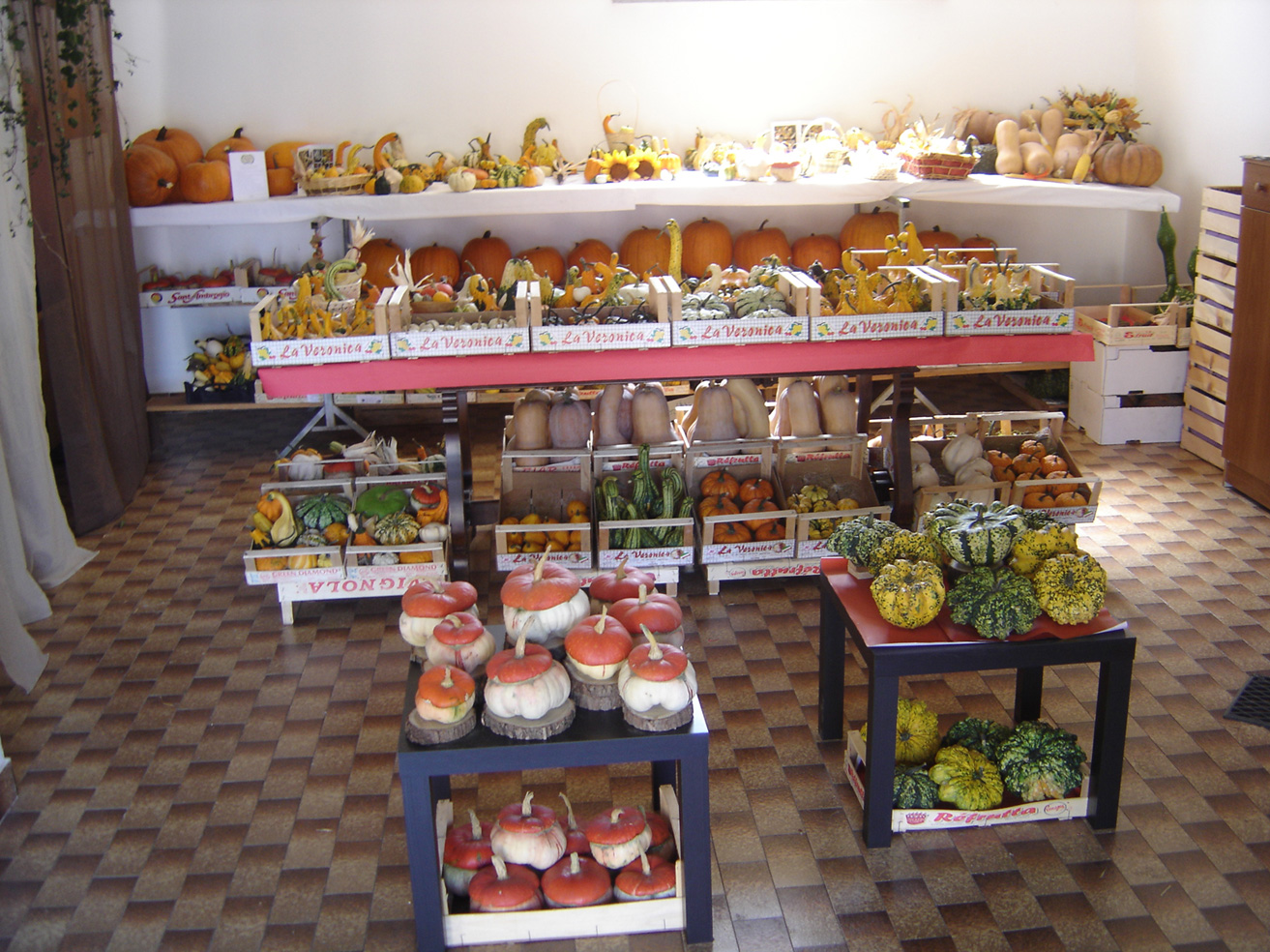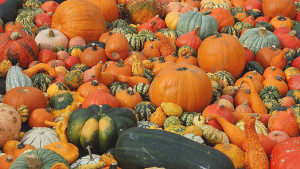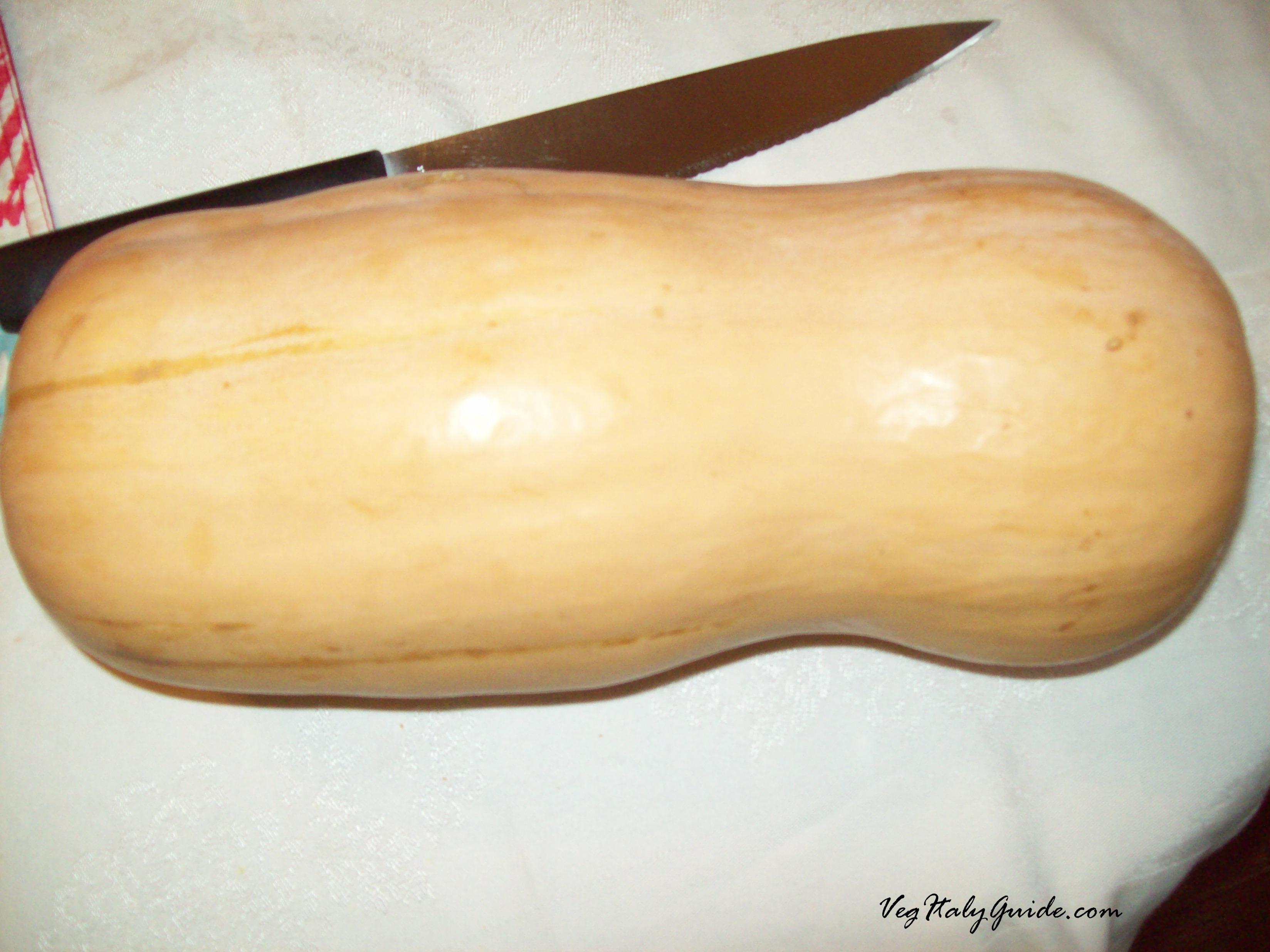Ciao a tutti!! Today we have a few questions about the butternut squash. The last recipe I made with the butternut squash worked out great for our North/South American continent viewers, but in Italy it’s really tough to find. Not all supermarkets carry it and it’s not readily available in Italy like it is on the american continents. If you do find it, make sure it the actual correct butternut. There are a couple versions which look like it could be butternut, but it’s not and the taste may be different.
You may be able to find it in a shop, like this one near Udine, that carries “ornamental squash” during the fall months, since they may also have edible squash available there. 
First we have to give it a name, since “butternut squash” may be somewhat confusing.
Zucca is the traditional word for squash in Italian. Typical squashes include pumpkin. In fact, if you just say zucca 99% of people will think of pumpkin. The other 1% will think of the gourd type squash we always see around October. In Italy, you will see the squash season starts about the same time: Sept – Nov and most supermarkets and fruttivendoli will have them available.
In Italy we have seen several names for butternut squash, one being zucca asiatica, which literally means asian squash. This is a misnomer because it does not come from Asia. We have also seen it called zucca violina (violin squash). This may be actually more correct, however it may have the skin coloring of a dark yellow gourd and the texture may be more bumpy. We can use the term butternut liscia, which seems to be the official terminology. Literally “smooth butternut”.
This squash is not native to Italy and is not widely harvested or widely diffused, except for small family farms or local farms.
The squash is actually a north/south american continent native. Squash originally came from central America. The native american indians starting eating it around 3000 years ago. It actually didn’t arrive in Europe in the 1500’s.
The traditional butternut has a smooth outside texture and is fat on the bottom with a slimmer body. When opened, it should be dark orange with white seeds. It can be cooked just like potatoes: in the oven (al forno), fried (fritto), boiled (bollite) and also made into a puree’. It should be sweet tasting and can be used to make pies, too!!


